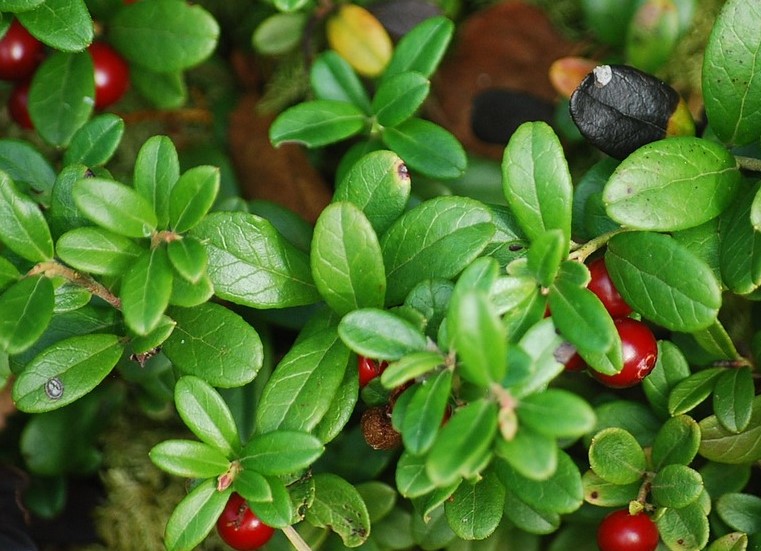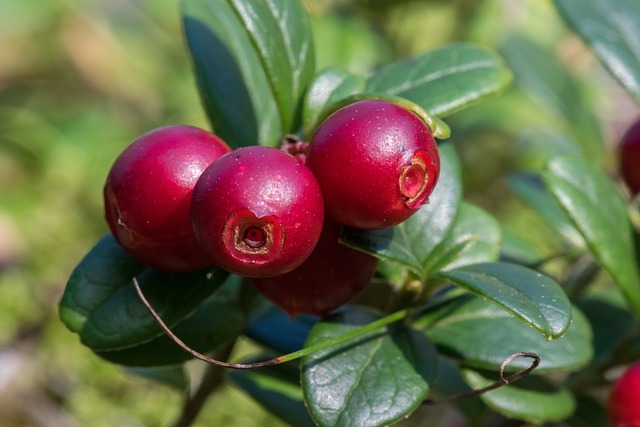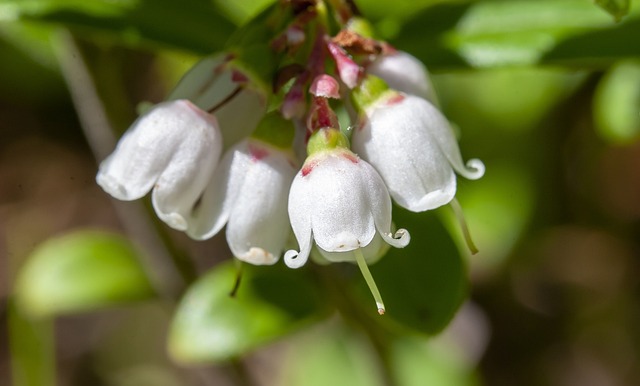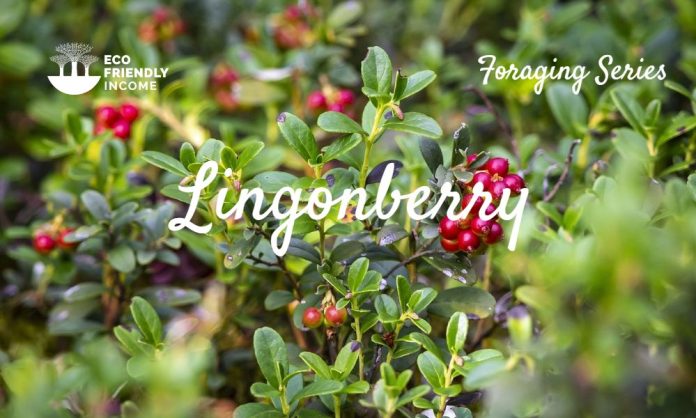A field guide on how to propagate Lingonberry (Vaccinium vitis-idaea), a hardy shrub that is native to eastern North America.
Lingonberry Traits
Leaves

Lingonberry leaves are elliptical to obovate-shaped, with entire margins(smooth), and grow on the stems in alternate arrangements.
Fruit

Lingonberry fruits are small, round, and bright red in color. They are similar in appearance to cranberries, but slightly smaller and with a milder flavor.
Lingonberry fruits appear after the flowers and ripen by mid to late summer, sometimes as late as early fall.
Flower

Lingonberry flowers are small and bell-shaped, with a delicate pink or pale red color. They grow in clusters at the end of the branches.
Proper flowering and pollination are needed for a good lingonberry harvest.
Flowering Season
You can spot lingonberry flowers blooming from mid to late spring until early summer.
Habitat
Lingonberry appears in holarctic distribution around the world boreal forests. They are common understory shrubs in pine forests.
You can find it growing along with moss under tree stands or generally treeless areas like sphagnum bogs.
Some trees and understory plants that associate with lingonberry are:
- Jackpine (Pinus banksiana)
- Lodgepole Pine (Pinus contorta)
- Alpine Bearberry (Arctostaphylos alpina)
- Wild Rose (Rosa acicularis)
- Labrador Tea (Rhododendron groenlandicum)
- Crowberry (Empetrum nigrum)
Wildlife Value
Lingonberry plants benefit a wide range of animals.
The browse of the plant is eaten by barren-ground caribou, black bear, moose, arctic hare, and snowshoe hare.
Lingonberry fruits are an important food source for many species of birds and mammals, including spruce grouse, red fox, black bear, and a variety of songbirds such as:
- Scarlet tanager
- Eastern bluebird
- Thrushes
- Northern mockingbird
- Rufous-sided towhee
- Gray catbird
- American robin
- Brown thrasher
How to Propagate Lingonberry (Vaccinium vitis-idaea)

Hardiness Zone: 2-9

Soil Type: Peat, loam, sand.

Water: Normal.

Exposure: Full Sun to Partial Shade.
You can propagate lingonberry with two effective methods:
- Stem Cuttings: It provides established trees faster, but is tricky, and will probably have a lower success rate.
- By Seed: The success rate is high but takes longer to get established saplings.
Lingonberry seeds are tiny, which can make them hard to harvest, but it’s possible.
Cuttings can root with relative success in the spring or fall but won’t grow rhizomes very quickly, which is fine for berry production.
Alternatively, you could also divide wild plants by separating the rhizome.
We’ll focus on the two most successful techniques:
How to Propagate Lingonberry (Vaccinium vitis-idaea) by Seed
If you have access to wild lingonberry plants nearby, you can wait until late summer to harvest the fruits and gather the seeds yourself.
Alternatively, you can order seeds online at Sheffields.
How to Harvest Seeds
To harvest the seeds inside the fruits, you have two options:
- Harvest manually: Cut open the fruits, and pull the seeds out with tweezers.
- Use a blender: Blend the fruits, strain them, remove the pulp, strain again and collect the tiny seeds.
Now if you want to store them, the most important step after this is to let them dry properly.
For air drying, you want them to be in a cool area, away from direct sunlight but also well-ventilated.
Note: Germination rates for lingonberry dramatically drop the longer you store them. Best to sow not long after harvest.
Sowing
Lingonberry seeds sowed directly after harvest will do well, at about 75% germination rate.
You can sow them in pots at 1/8 inch depth and overwinter them outside for natural stratification.
Indoors you can put the seeds in moistened sand inside a zip lock bag and recreate cold stratification in your fridge.
Generally, 90 days in the freezer, take out for 24 hours, soak in water, and place in the fridge for another 60 days.
It’s been noted that they can germinate without cold-treatment, but at lower odds of success.
How to Propagate Lingonberry (Vaccinium vitis-idaea) by Cuttings
You can also propagate lingonberry by taking semi-hardwood cuttings. The best time to do that is from June to mid September.

Follow the 6-week rule!
The current season’s growth starts to harden at about the 6-week mark after the first leaves emerge in spring. That’s the perfect time for you to harvest your cuttings.
Here’s how to do it:
- First, identify the current season’s new growth.
- Next, take cuttings just below where the stem turns from green to brown.
- In general, a good length for cuttings is 4-5 inches, but more importantly, make sure the width is thick enough, 1/8-1/4 inch each is good.
- When you cut, you want to do it at an angle and below a node, then scuff up the bottom inch of your cuttings.
- Moisten your cuttings, then dip in rooting hormone.
- Prepare your rooting medium by poking holes through it, then insert your cuttings, and tamp the soil (Don’t compact the soil too much!).
- Keep watering the cuttings to maintain humidity, and cover them with plastic if the humidity is too low. Make sure to ventilate periodically.
- Roots will form within 6-8 weeks, from there you can uncover and let them grow more foliage before transplanting.
Recommended Rooting Medium: Pure peat or sand/perlite/peat mix.
FAQ
A: Yes, they are actually native to Canada, and can grow in harsh weather conditions.
A: Yes, similar to blueberries, they have tiny seeds inside each fruit.
A: Lingonberries are slow growers, they won’t grow much more than 6-12 inches within the first two years.
A: Lingonberries grown from seed will create rhizomes, and established plants will spread over 9 inches within the next few years after establishment.
A: Lingonberry starts making fruits after 2-3 years of growth. Fruits yields are generally greater on peat soil rather mineral, sandy soil.

